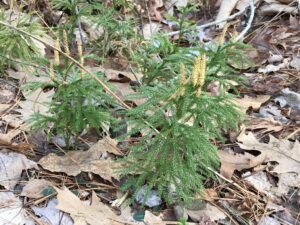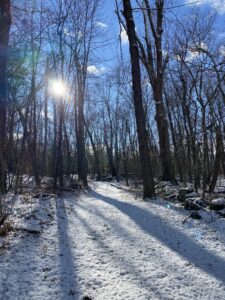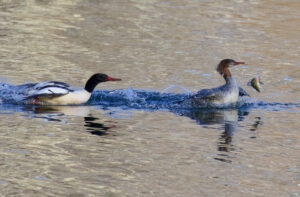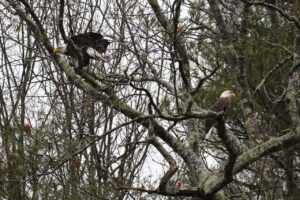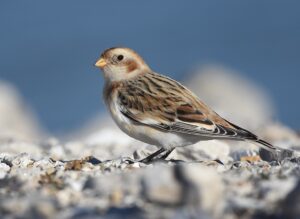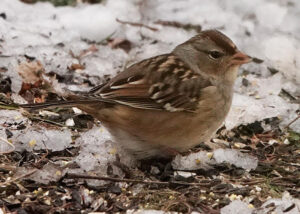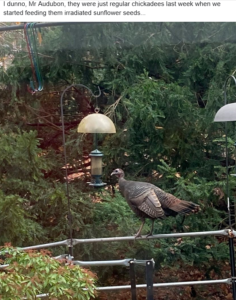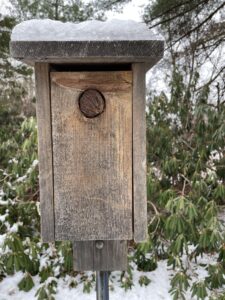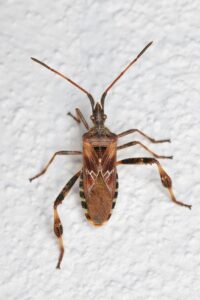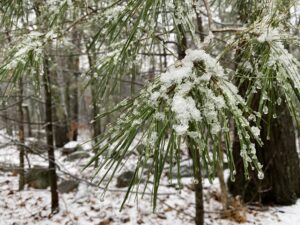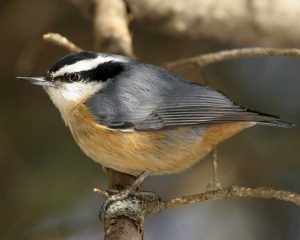Written by Gwyn Loud for the Lincoln Land Conservation Trust. She welcomes your sightings and questions at 781-259-8690 or gwynloud555@gmail.com.
Winter will officially arrive on Dec. 21, the solstice, the shortest day of the year and thereafter, the hours of daylight will gradually increase. A sign of hope! The solstice this year will also be marked by a historic event in the night skies, a “grand conjunction” of Jupiter and Saturn. Even though they will actually be more than 400 million miles apart, their orbits will make them look almost touching, as if they are one bright star. According to NASA, “Look for them low in the southwest in the hour after sunset. And on December 21st, the two giant planets will appear just a tenth of a degree apart – that’s about the thickness of a dime held at arm’s length! This means the two planets and their moons will be visible in the same field of view through binoculars or a small telescope.” Jupiter and Saturn will not appear to be this close again until 2080, so best to look now.
Turning to Earth, and specifically Lincoln, the landscape is white as I write, following the second snowstorm of the season on December 5. The snow was not deep but unusually cold temperatures the following few days kept the icy crust from melting. Two days before the snowstorm the temperature was near 60℉, continuing a pattern which now seems common of wide and rapid swings in temperatures.
The trees are resting; buds are ready, however, to burst forth in a few months as weather warms and hours of sunlight lengthen. Along roadsides one can easily find green leaves of plants such as celandine poppy or garlic mustard, and hardy dandelions have been known to bloom in sunny locations in most months. Walkers in the woods will see that clubmosses are green all winter, looking like miniature conifers on the forest floor. They are a group of ancient plants which do not have flowers or fruits and reproduce by spores rather than seeds. In shrubby wetland habitat look for the beautiful red stems of red osier dogwood, the most widespread native species of dogwood in the U.S.A.
Ducks have been spotted on Flint’s Pond, including hooded mergansers, common mergansers, common golden-eye, and bufflehead. There were large numbers of ducks recently on the Cambridge Reservoir, including about three hundred ring-necked ducks, 77 hooded mergansers, many mute swans and Canada geese and a few American wigeon and gadwall, which are seen less often. Two rather rain-soaked bald eagles were photographed as they perched by Farrar Pond. Another interesting sighting was of a flock of snow buntings near Minuteman Technical High School. Snow buntings breed far north in the tundra and are only winter visitors to Massachusetts, usually found on open fields or on coastal dunes. Sometimes they are called “Snowflakes” because they look like whirling snow as they rise and fall in a flock.
Those feeding birds report that most of their clientele are “the regulars”, but a few American tree sparrows have been seen and I am pleased to have a first-year white-crowned sparrow feeding with other sparrows on the ground. A Winter St. resident had brief visits from a couple of common redpolls and a single evening grosbeak, birds which are members of “irruptive” species coming south to New England in years when their food supply in Canada is poor. Pine siskins and red-breasted nuthatches, which are being seen this winter in Lincoln, are also irruptives.
The annual Christmas Bird Count is organized all over the country by the National Audubon Society within a two-week window. The data collected gives valuable information about population numbers of species and their range and the impacts of climate change and other factors. Lincoln is part of the Concord Bird Count and we will be counting on Jan. 3, 2021. Townspeople who would like information about participating either as part of a field team or counting birds at feeders should check the website: https://concordcbc.org, call or text Norman Levey at 781-259-0855 or contact me. Safe COVID protocols will be followed.
Mammals such as woodchucks and chipmunks have gone below ground for the winter, but at my house a lone hardy chipmunk has been gobbling up fallen bird seed even on bitter cold days. Students at Drumlin Farm found tracks of fisher, coyote, rabbits, and mice, and Norman Levey saw an otter at Valley pond and recorded its calls. A Weston Rd. resident found a mammal mystery: a black walnut, which had hairs on it, was wedged in the hole to a bluebird house. What animal tried to do this, and why?
Insects are rarely seen in the cold weather but you may come across western conifer seed bugs in your house. These brown bugs, looking to escape the cold, are harmless and do not bite, sting or destroy anything. They make a buzzing sound when they fly and can smell bad if squished. It is easy just to pick them up and put them outdoors. Please avoid using chemical sprays on them.
As this is my final wildlife column of 2020, I would like to take the opportunity to thank my “official team” of wildlife observers: Stacy Carter, Vin Durso, Marcia Gagney, Tom Gumbart, Nancy Hammond, Sue Klem, Jane Layton, Norman Levey, Kathleen Lomatowski, Ron McAdow, Harold McAleer, Ellen Meadors, Alaric Naiman, Corey Nimmer, Tia Pinney, Nancy Soulette, Pam Sowizral, Rob Todd, and Robin Wilkerson. I am also grateful for the calls and e-mails from other observant townspeople who appreciate the many forms of wildlife around us. Thanks also go to Bryn Gingrich who puts the column on the LLCT website, along with photos.
I wish my readers good health and restorative experiences in the natural world in the new year. Here’s to a better 2021 in every way!


